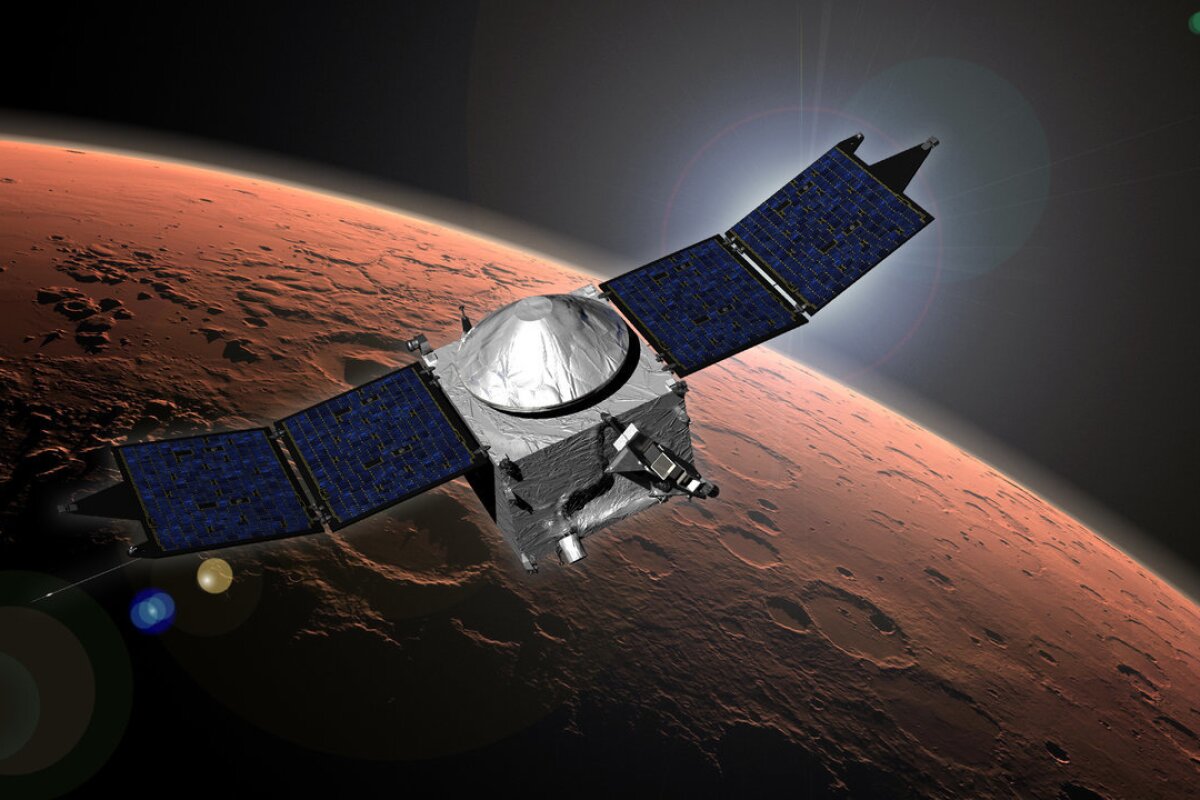
You can all go back to sleep. It did not stop, but two waves interacted to produce a rare null zone just where we had a device to detect it all. wonderful how physics can play with your head.
Neat event though. I wonder if this wind is able to entrain DARK MATTER? I do not think so. That demands high frequency.
question though? Does DARK MATTER consisting of neutral neutron pairs simply flow through the earth? Neutrinos certainly do but a non reactive particle pair without any orbitals should at best just bump into larger elemental objects and flow past.
Solar wind vanishes completely, causing Mars' magnetosphere to swell
December 12, 2023
An artist's impression of NASA's MAVEN spacecraft
NASA/Goddard Spaceflight Center
The solar wind is a constant feature of the solar system – except on Christmas Day 2022 when it suddenly vanished completely. The odd event was detected by a NASA spacecraft orbiting Mars, which found that the Red Planet’s magnetosphere tripled in size in response.
While the Sun works away as a giant nuclear fusion reactor, it belches out a non-stop stream of charged particles, which we call the solar wind. This buffers all the planets, and would strip away their atmospheres if not for the protective magnetosphere, which diverts incoming particles.
The solar wind fluctuates, but last December it surprised astronomers when it suddenly stopped completely for a couple of days. The anomaly was detected by MAVEN, a NASA orbiter studying the atmosphere of Mars, whose instruments recorded a drop in solar wind density by a factor of 100. Without the pressure of the solar wind, the Red Planet’s magnetosphere and ionosphere swelled up to three times their normal size.
“When we first saw the data, and how dramatic the drop in the solar wind was, it was almost unbelievable,” said Jasper Halekas, lead author of the study. “We formed a working group to study the event, and we have found this time period to be rich with incredible findings.”
MAVEN found that the ionosphere went from a magnetized to an unmagnetized state, while the region at the boundary saw much less electromagnetic activity than usual. About two days later, the solar wind returned, providing the NASA team with a rare window into an unusual set of circumstances.
“We are really getting to see how Mars responds when the solar wind is effectively removed,” said Halekas. “It makes for a great outlier study on what Mars would be like if it were orbiting a less ‘windy’ star.”
The team says that the drop-off was due to a rare interaction between waves of the solar wind. A fast-moving wave overtook a slower-moving one, which causes them to compress into one wave that leaves a less dense region trailing behind. This phenomenon has been known to happen on very rare occasions, including one that washed over Earth in 1998, but there aren’t usually spacecraft as well positioned as MAVEN to study them.
The event occurred as a result of heightened solar activity, as the Sun ramps up to the peak of its 11-year cycle.
The research is being presented at the American Geophysical Union Fall Meeting. The team describes the work in the video below.
<iframe width="800" height="450" src="https://www.youtube.com/embed/nF2FJB-QKs8" title="The Day the Solar Wind Disappeared from Mars" frameborder="0" allow="accelerometer; autoplay; clipboard-write; encrypted-media; gyroscope; picture-in-picture; web-share" allowfullscreen></iframe>
No comments:
Post a Comment